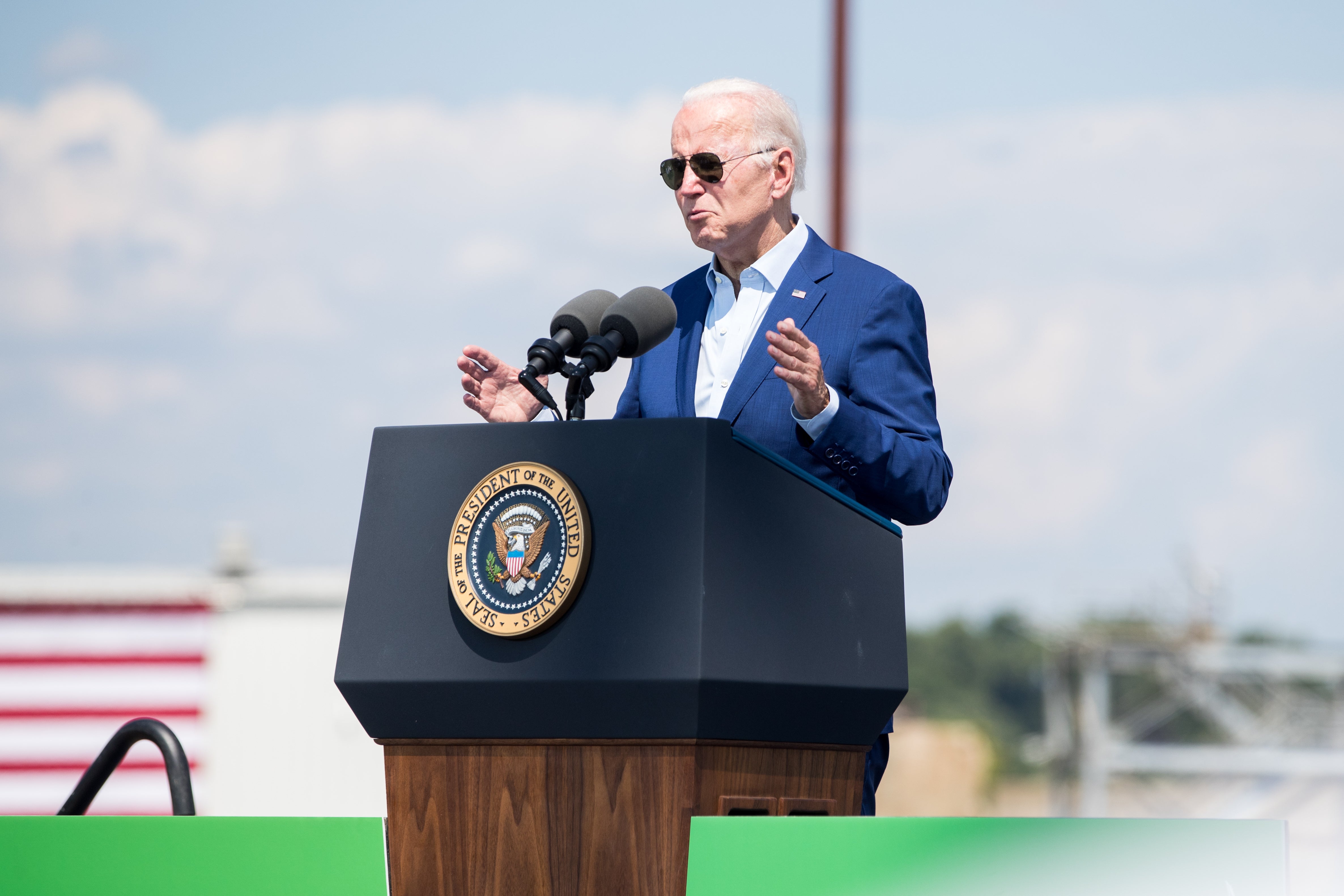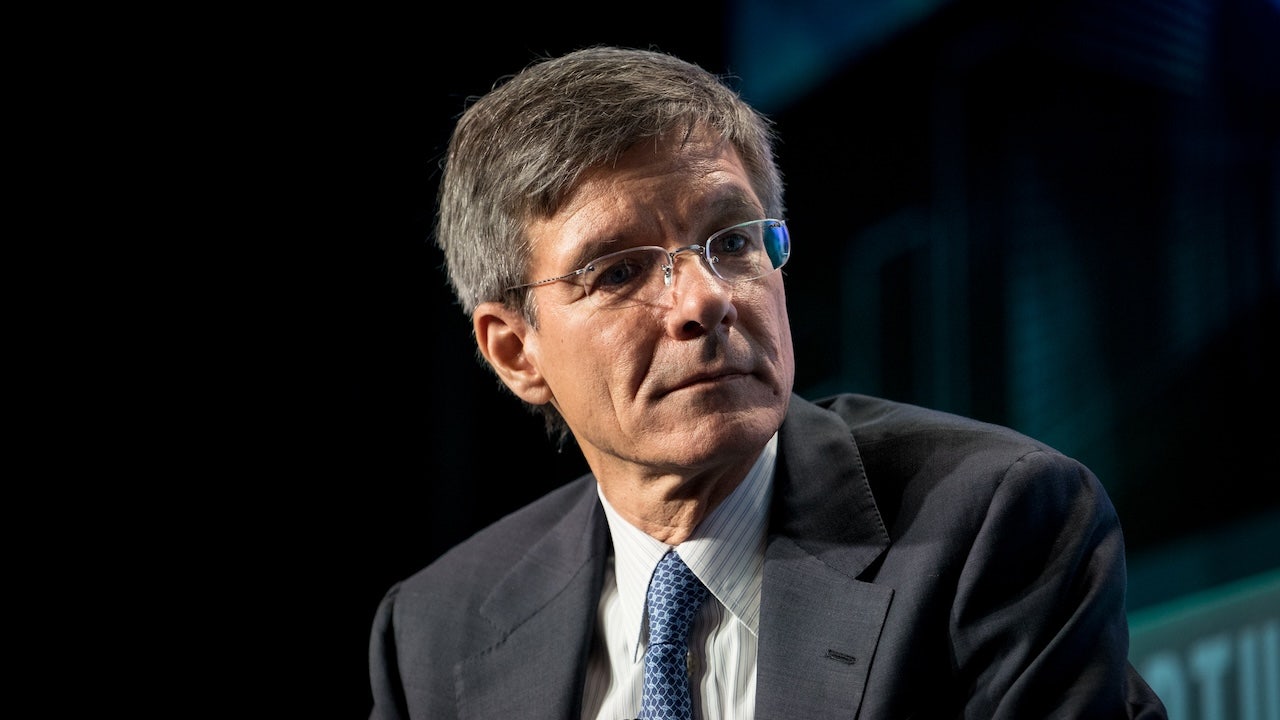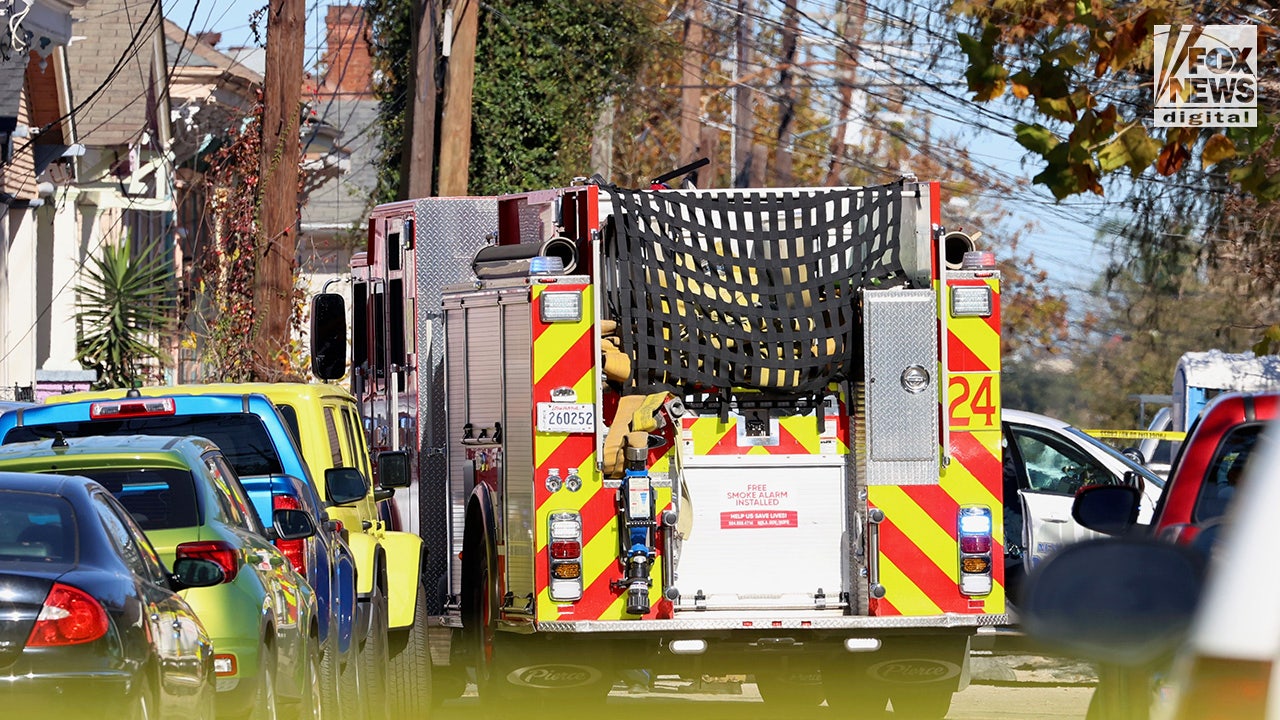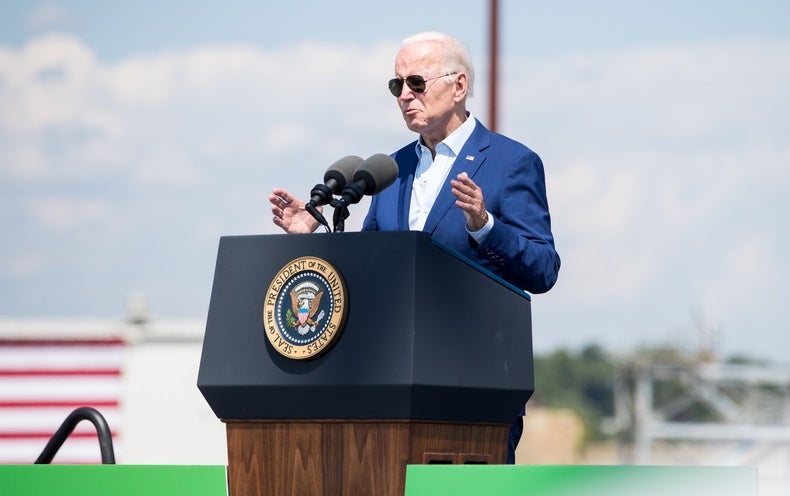
CLIMATEWIRE | President Joe Biden yesterday unveiled a major expansion of U.S. wind energy in the Gulf of Mexico and vowed to take more executive action on global warming in the face of congressional gridlock.
With the bulk of his climate spending stalled by Senate Republicans and Sen. Joe Manchin (D-W.Va.), Biden said he would step in and use the power of the presidency to drive emissions cuts through a series of upcoming executive actions and regulations.
“Let me be clear, climate change is an emergency,” Biden said. “And in the coming weeks I’m going to use the power I have as president to turn these words into formal, official government actions through the appropriate proclamations, executive orders and regulatory powers that the president possesses.”
Biden made that pledge as he spoke on the site of a former coal plant in Somerset, Mass., that is being converted into an offshore wind manufacturing facility. As part of his speech, Biden said he wouldn’t let Congress stand in his way any longer.
“When it comes to fighting climate change, I will not take ’no’ for an answer,” he said.
Biden’s plan to expand offshore wind in the Gulf of Mexico will comprise 700,000 acres, with the potential to power 3 million homes. The administration has overseen a significant expansion of offshore wind in the Northeast, but these will be the first wind turbines in the Gulf — a region long known for its offshore drilling rigs and fossil fuel production.
Additional wind farm development can now occur off the coasts of Georgia, the Carolinas and Florida after Biden rolled back an executive order from former President Donald Trump.
In addition to the offshore wind expansion, the White House announced the Federal Emergency Management Agency would use $2.3 billion to help communities become more resilient to flooding, wildfires and heat waves. The Department of Health and Human Services provided new guidance to support states to protect vulnerable populations from extreme heat conditions.
Biden spoke on a sweltering day when much of the globe was dealing with red-hot temperatures. A third of the U.S. population was under an excessive heat warning. Runways were melting in the United Kingdom. And wildfires were raging in southern Europe and the American West.
On the 2020 campaign trail, Biden pledged $2 trillion in climate spending. And since last year, congressional Democrats have tried to help him meet that promise by putting together a budget reconciliation package that would have invested more than $500 billion toward the goal of cutting emissions in half by 2030.
But those efforts have been stymied by Senate Republicans and conservative Democrats such as Manchin and Kyrsten Sinema (D-Ariz.). Biden yesterday took aim at Republicans who long have refused to support policies that would curtail the use of fossil fuels.
“Not a single Republican in Congress stepped up to support my climate plan,” he said. “Not one.”
Manchin has spent the last year whittling down the climate ambitions of the reconciliation bill, and his latest move to kill the plan has increased pressure on Biden to declare an emergency over the climate crisis. That would shift the bulk of climate policy to the White House, but executive actions from the president can more readily be rolled back by the next Republican administration.
In recent days, climate advocates and a growing number of Democratic lawmakers have gotten louder in their calls for Biden to declare a climate emergency, which would unlock additional presidential authority. Many hoped that Biden would do so during his speech in Massachusetts.
“The world’s burning up from California to Croatia, and right now Biden’s fighting fire with the trickle from a garden hose,” said Jean Su, energy justice program director at the Center for Biological Diversity. “Saying we’re in a climate emergency and declaring one under the law are totally different things.”
Other advocates were relieved to see Biden forge a new path on climate.
The president’s pledge to do more on climate is the “beginning of sustained action and attention from the administration” to cut carbon emissions, said Christy Goldfuss, senior vice president for energy and environment at the Center for American Progress.
“After Sen. Joe Manchin (D-WV) single-handedly killed legislation that included investments to combat climate change, President Biden knows the burden falls on his administration to do all that it can with existing authority,” Goldfuss said in a statement. “Today was a step in that direction.”
Democratic climate hawks such as Sen. Brian Schatz (D-Hawaii) said Biden should no longer wait for Congress.
“While we sort out what can get through Congress, it’s time to use the full force of the executive branch to combat this crisis,” Schatz said in a statement. “The president has tons of authority under current law, and I’m glad that he is determined to exercise it.”
White House climate adviser Gina McCarthy told reporters yesterday that the administration would use executive action to “double down” on its climate goals. Both she and Biden referred to climate change as an “emergency” but stopped short of an emergency declaration.
McCarthy said the administration is sensitive to the need for a declaration but insisted there is a larger plan in the works.
“We need to be thoughtful about this, and we want to outline actions, not just declare things,” she said.
Reprinted from E&E News with permission from POLITICO, LLC. Copyright 2022. E&E News provides essential news for energy and environment professionals.

























































